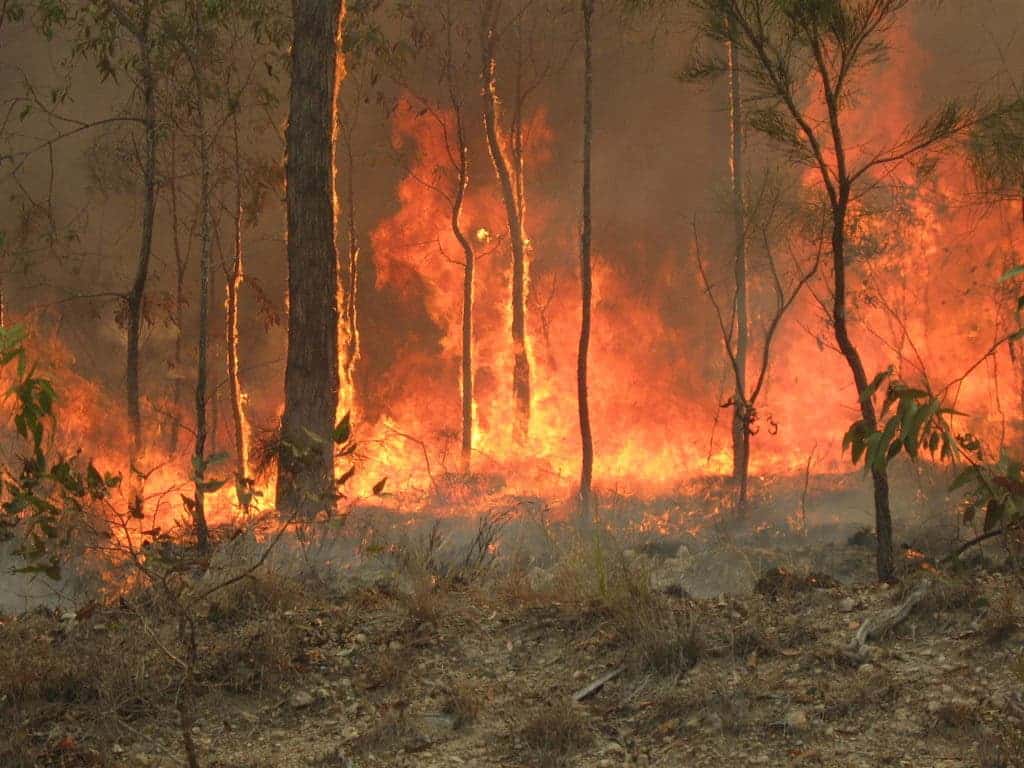
As climate change becomes increasingly prevalent around the world, thousands of homeowners have lost their insurance after insurers have pulled out of at-risk areas (i.e. California’s wildfire-prone area). Such situations will become more and more common as climate change turns up the thermostat, making extreme weather more intense and frequent, posing a huge challenge to local governments who now have to intervene in the insurance market.
The premium we all have to pay sooner or later
When you buy insurance, whether to cover your health, home, vehicle, and other valuables, companies use a wide range of factors to calculate the insurance premium you owe. These include your age, health history, the type and amount of coverage, marital status, credit rating, ZIP code, but also the likelihood of extreme events. But in places such as California, where the massive property insurance market is reeling from three consecutive years of destructive wildfires, ‘extreme’ is becoming the new ‘normal’.
The biggest insurers in the state, such as State Farm and Allstate, have declined to renew roughly 350,00 policies in areas at high risk for wildfires since 2015, the California Department of Insurance reported in 2019. The department also received a record number of requests from insurers asking to increase the rate they charge property owners. Those affected by major wildfires in the past are the most affected — it seems like insurers wouldn’t touch their property with a 10-foot pole.
In response, California lawmakers had to pass a law last year giving the Department of Insurance emergency powers that allow policies to remain in effect for those in fire-prone areas — that’s around 1 million homeowners.
“This wildfire insurance crisis has been years in the making, but it is an emergency we must deal with now if we are going to keep the California dream of home ownership from becoming the California nightmare, as an increasing number of homeowners struggle to find coverage,” California Insurance Commissioner Ricardo Lara said in a statement.
The reluctance of insurers to renew policies in California’s wildfire country simply makes economic sense. The 2008 California fires caused $719 million in damages, wheres those in 2016 and 2018 caused a combined $25.3 billion in damages. The damage from the 2019 season has yet to be properly estimated, but it is expected to be very high. The most significant wildfire of 2019 burned 78,000 acres in Sonoma County, destroying 374 buildings and damaging another 60.
These developments echo those following the 1994 California Northridge earthquake, which caused insurers to stop offering earthquake insurance.
Elsewhere, in Australia, things are much, much worse. The months-long bushfires razed a staggering 8 million hectares (20 million acres), killed 25 people and millions of animals, and destroyed almost 2,000 homes. The Insurance Council of Australia estimated the damage bill had reached $485 million, but said it expected insurance cost to rise significantly — it will likely end in tens of billions in damage because the crisis is still ongoing.
Although rain has calmed fires in New South Wales and Victoria, officials warn that blazes will take off again. There are fears that large blazes in both states could merge, creating unpredictable fire fronts.
Australia contributes 1.3% of the world’s carbon emissions but is the second-largest emitter per capita behind the United States.
A United Nations climate report published in 2007 said heatwaves and fires were “virtually certain to increase in intensity and frequency” as global average temperatures increase.
“An increase in fire danger is likely to be associated with a reduced interval between fires, increased fire intensity, a decrease in fire extinguishments and faster fire spread,” the 2007 report said.
But, despite strong evidence that climate heating can supercharge wildfires, the Australian government is taking a backward stance. The country’s citizens have been very disappointed in Prime Minister Scott Morrison’s response to the current crisis, including for taking a holiday to Hawaii during Australia’s worst bushfire in history. Now, Morrison and his emissions reduction minister, Angus Taylor, say Australia does not need to cut carbon emissions more aggressively to limit global warming.
How will such claims offer insurers the confidence they need to issue policies to buyers? Most likely, they will have the opposite effect, making it increasingly difficult for Australians to insure their property against disasters.
Of course, it’s not just wildfires that are disrupting the insurance market — that’s just the hot topic at the moment. According to National Oceanic and Atmospheric Administration’s National Centers for Environmental Information, the U.S. experienced 14 separate billion-dollar disaster events in 2018, costing $91 billion. In 2017, natural disasters were responsible for $312.7 billion in the U.S.
When Hurricane Harvey made landfall on Texas and Louisiana in August 2017, only half of the homes and businesses that were impacted had flood insurance. Now, even those who want one will find it very difficult and expensive to get it. Once again, this is another area where the poor will be disproportionately affected by climate heating.






